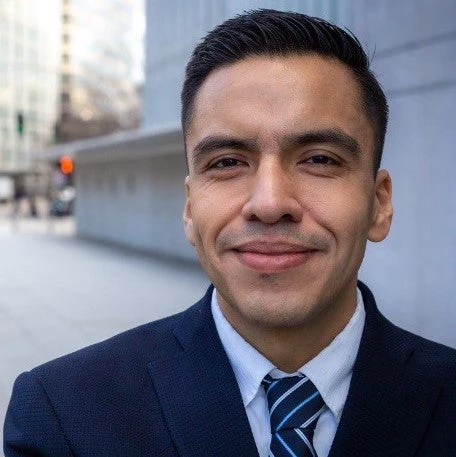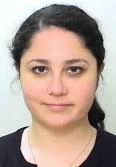 Niño sentado en su escritorio con su máscara. / Shutterstock
Niño sentado en su escritorio con su máscara. / Shutterstock
In early 2020, most countries around the world made the decision to partially or fully close schools to contain the spread of the coronavirus (COVID-19). This resulted in an unprecedented number of students being unable to attend school in person – at the peak of school closures in late March 2020, over 1.6 billion students were affected worldwide. More than half a year later, in mid-November 2020, as COVID-19 cases continue to rise in many parts of the world, over 670 million students reside in countries that are implementing full school closure policies, and over 150 million students are in countries where schools are partially closed. School closures have had severe consequences on students' learning opportunities as well as their socioemotional and cognitive development. The estimates of learning losses associated with school closures suggest that affected students can lose nearly $10 trillion in lifetime earnings, adding to countries' considerations for reopening schools.
As countries evaluate when and how to reopen schools safely, one key question is how schools will support learning and learning recovery. During school closures, some students continued to learn through various remote modalities, such as online learning platforms, television and radio, and paper packets, while others stopped learning altogether. When schools reopen for in-person instruction, students will return with very different levels of knowledge and skills, with disadvantaged students most likely to exhibit the greatest learning losses. The key to learning recovery in this context is the alignment of instruction and additional supports to where students are in their learning trajectory. Learning assessment – the process of gathering and evaluating information on what students know, understand, and can do – is an essential ingredient in this process of evaluating the state of student's learning and in supporting learning recovery and advancement towards learning goals. As such, learning assessment should be a key element of any policy package supporting school reopening, as it puts the focus back on learning.
To help policymakers, school leaders, teachers, parents, and other stakeholders in the learning process address important questions, such as "What do students know and are able to do when they return to school?" and "Are students catching up with their pre-COVID-19 learning trajectory?," the Learning Assessment Platform (LeAP) team has prepared a guidance note on using learning assessment in the process of school reopening. The note provides detailed guidance on how different types of learning assessment can be used to support learning and learning recovery after school reopening. It is expected that the learning assessment approaches and country cases presented in the note can also help countries build more resilient national learning assessment systems and guide them in future shocks that interrupt in-person instruction.
For example, classroom assessment is best used to support teachers to adjust their instruction to the students' level and to provide constructive feedback to students, which is crucial for learning recovery. Large-scale assessment is best suited to support informed system-wide decision-making to support schools and students, including to inform resource allocation to schools and students who need it the most even in the context of tight fiscal space due to economic repercussions of the pandemic. Likewise, the note also addresses how high-stakes examinations, which are often used for certification of studies or selection to the next level of education, may need to be adjusted in the context of school reopening.
The guidance note recognizes the diversity of contexts and constraints that countries are facing, and guides in the preparation and implementation of assessment-related activities under different resource scenarios. For example, with respect to diagnostic classroom assessment, the guidance note suggests reliance on existing instruments to assess learning and prioritizing assessing foundational skills in early grades when resources are scarce, while countries with more resources can develop new assessment instruments and expand the assessment activities to other subjects and grades.
As countries consider approaches to including learning assessment in the process of school reopening, the note provides guidance on how to prepare and administer assessment activities and how to ensure that the results from assessments are used as intended. The guidance note provides key actions and their approximate timing relative to the school reopening date to inform this process and ensure that attention is paid to issues such as instrument design, logistics, training of assessment administrators (whether they are teachers or hired proctors), data analysis, and reporting of results. Importantly, the note also provides examples of how countries around the world have already implemented (or are planning to implement) different types of assessment activities to support learning and learning recovery:
- Countries like Chile are implementing diagnostic assessments of literacy, numeracy, and well-being, both in-person and remotely to determine how to support students during the ongoing pandemic.
- As part of its partial school reopening process, Kenya has implemented large-scale assessments administered by teachers in the classroom covering relevant subjects of the curriculum to monitor students as they return to the classroom.
- Countries like South Korea have been implementing continuous formative assessment in the classroom and online since schools reopened.
- For some countries like Vietnam, the previously developed plans and logistics for administering a large-scale assessment could coincide with eventual school reopening. These assessments are expected to provide evidence of COVID-19 learning losses and enable resource allocation decisions to support schools and students lagging behind.
As students return to schools around the world in these uncertain times, the first priority will be to ensure their health and safety and support their socioemotional well-being. Putting the focus back on learning will be the next task, and the process of assessing student learning will be key in ensuring learning continues to take place when students are back in the classroom.
The guidance note referenced in this blog was produced by the Learning Assessment Platform (LeAP) team in November 2020 and may be updated in the future.




Join the Conversation